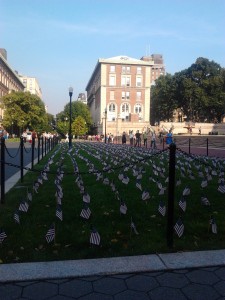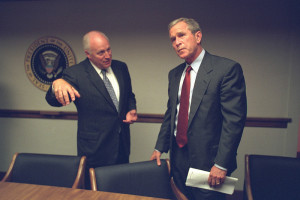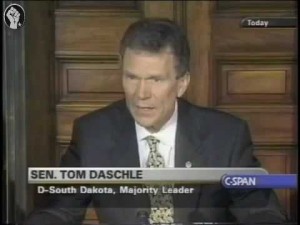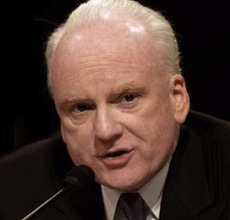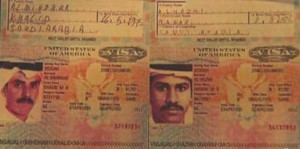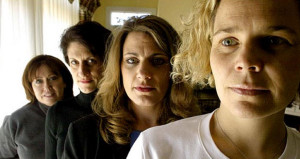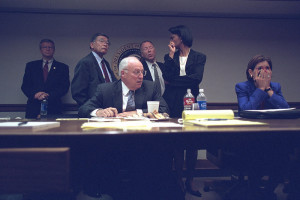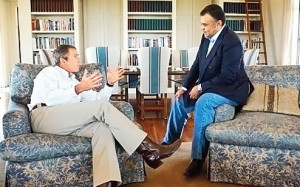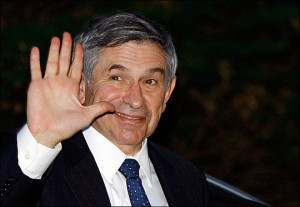9/11: we are all Americans, but someone is more American than others
St. Paul is a small cathedral in Gothic style at the foot of the futuristic towers of Wall-Street; it is known to be the oldest building in activity of Manhattan. In September 2013, during my staying in New York, I got acquainted with Sylvia, a parishioner; she told me that the organ works only partially: some reeds are still crammed with dust and debris from the skyscrapers collapsed during the 9/11 terrorist attack, in 2001. The cost to clean them up would amount to a few million dollars, and most of the parishioners of St. Paul would prefer to allocate that amount to charitable activities. Others, however, are asking for the removal of those remains, so that the organ would be operating like before.
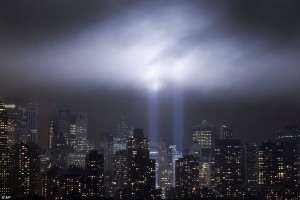 Thirteen years after the day when everything changed, apart from the dust in some crevices, the urban wounds seemed to have been sealed: in place of the Twin Towers were built the 9/11 Memorial, recently opened, and the Liberty Tower, which will be operative next year. In the evening of each anniversary two light-blue beams spear the dark sky above New York: the ghosts of the World Trade Center 1 and the World Trade Center 2, hit by two hijacked airliners, remind the most tragic event for the United States since Pearl Harbor, the Hawaiian base attacked by the Japanese fleet in 1941. From the shores of Brooklyn you can see those holograms of light just like thirteen years before New Yorkers were staring terrified at the gutted towers, the plumes of smoke, the dive of the jumpers, the destruction of the buildings, the waves of dust similar to volcanic jets.
Thirteen years after the day when everything changed, apart from the dust in some crevices, the urban wounds seemed to have been sealed: in place of the Twin Towers were built the 9/11 Memorial, recently opened, and the Liberty Tower, which will be operative next year. In the evening of each anniversary two light-blue beams spear the dark sky above New York: the ghosts of the World Trade Center 1 and the World Trade Center 2, hit by two hijacked airliners, remind the most tragic event for the United States since Pearl Harbor, the Hawaiian base attacked by the Japanese fleet in 1941. From the shores of Brooklyn you can see those holograms of light just like thirteen years before New Yorkers were staring terrified at the gutted towers, the plumes of smoke, the dive of the jumpers, the destruction of the buildings, the waves of dust similar to volcanic jets.
Yet, in that day of commemoration, for me it was difficult to perceive the emotional scars of the people.
At dawn I had an appointment with Marie, a nurse originally from Colorado. We sat in a café and ordered breakfast. After a few minutes I pointed out that it was the anniversary of 9/11. Marie paused, looking confused at me; then, placing a hand on her forehead, she said: “You know, I’d forgotten it.”
Later I went to visit Columbia University; about 3000 stars and stripes flags carpeted the two flowerbeds of the square, between the red-bricks buildings and the library after doric style. I sat on a bench, under the shade of an oak tree, in front of those little tombstones made of fabric; I tried to tune my spirit with a grief that after all is still recent in history. I have not been able to make it. The casual swarm of students and professors hit me like something unfair. The vast majority of people kept going without even composure in the face of the enormity of that symbol. As if the tombstones made of fabric were invisible.
On 12/9/2001 a major Italian newspaper titled in the frontpage: “We are all Americans”. At the time I really felt that way, and not just because US culture has always played a big role in my life. I remember I wrote this sentence to an american friend of mine: “I will come to NYC one day, to say a prayer for the dead.”
But thirteen later it was more difficult than I thought.
Around one o’clock in the afternoon I walked into a small café in Saint Nicholas Avenue. A little TV set broadcast live the celebrations of the anniversary of 9/11, but the volume was off. On the video, I watched the victims’ families, alterned, stepping on a podium: they named their loved ones, who are no more here. Suddenly, a customer asked who those people were. Everybody inside the café turned at the video. “Today is 9/11”, someone said. None spoke further: each one returned to his own affairs: one serving behind the counter, another one biting his sandwich, the other one drinking his macchiato.
That day, the only moment I felt of real emotion was at sunset, in Albany Street, next to the World Trade Center. The police band of New York was getting ready for a memorial parade at Ground Zero. The officers arrived in dribs and drabs, put down their instruments and hugged with those who were already in place. Pats on the backs, startled faces: it was with a bitter smile that they remembered colleagues buried by iron and cement thirteen years ago; as their fellow officers arrived, the notes rose thicker and thicker: those notes entered an inch in depth, shaking me, touching the strings of sadness.
And you find out the emotional scars when people decide to open up to you.
Marie told me that she was driving along a road in Denver when the first plane hit the North Tower (WTC 1); once she reached the clinic where she was workin, she found people staring at the TV. She clung to a colleague when on the screen appeared the second plane, and it crashed into the South Tower. Marie cried, seeing the towers crumble down in few seconds, while news reported of an explosion at the Pentagon: thousands were dying in front of her eyes, and mine, in those precise moments.
Sylvia, the parishioner of St. Paul, was in Italy on 9/11, at the airport of Rome, ready to leave for New York. All flights towards US, however, were canceled because of the attack. And days later, when she had to embark for the United States, Sylvia gave way to an Italian-American entrepreneur with a great urgency to return to New Jersey. That’s the way she met her future husband.
With Alison, a manager of urban projects, it was different. Both graduated in English literature, we found a common ground on many topics we do care about. And on the Iraqi war we intended each other immediately: the administration of George W. Bush and Dick Cheney, President and Vice President of the United States, had fabricated the proofs Saddam Hussein was in possess of weapons of mass destruction; the administration made up the links between the Iraqi tyrant and Osama Bin Laden, the instigator of the attack.
They lied to the world, even before the UN Coucil, to justify a war of aggression decided long before September 11th, as confirmed by, among others, former Treasury Secretary Paul O’Neill. Alison and I both shook our head at the thought that neither Bush nor Cheney have paid for their war crimes, and never will: from that illegal war to phosphorous weapons, to torture, to indiscriminate killings of civilians. But then I expressed my disdain for Paul Wolfowitz, the Deputy Secretary of the Defense under the Bush administration: Wolfowitz was the man who, above all the others, pushed for the war in Iraq, before and after the 9/11 attack on America.
In 1992, along with Dick Cheney, then the Secretary of Defense under the George W. H. Bush administration, Wolfowitz worked out a guide for the American Defense: the United States, after the fall of the Soviet Union, were supposed to emerge as the unique world power. A couple of the key points were outstanding: protection of American interests with unilateral military actions, and the conquest of raw materials everywhere, especially oil in the Middle East. That document, initially judged to be too aggressive, inspired the neo-conservative wing of the Republican Party. In 1997 Richard Perle and Robert Kagan constituted the “Project for the New American Century” (PNAC), gradually subscribed by many key men of the Reagan-Bush Senior era and by the future Bush-Cheney administration (and maybe the next administration, since Republican candidate Jeb Bush signed it too). It is not surprising, then, that a few days after 9/11 Wolfowitz, as testified by former General Wesley Clark, had already come out to wage war on Afghanistan and Iraq, and other conflicts were on his agenda for the next five years: Syria, Lebanon, Somalia, Sudan, Libya and Iran. Simply, he was putting into action what he had been studying for a decade.
Alison was surprised to hear that name; Wolfowitz, like Cheney, is kind of a gate that opens into a dimension parallel to the official narrative of the 2001 attack on America.
There was a silence between us, broken by a sentence thrown out casually.
“9/11 was an ‘inside job’; you know it, right? ”
She was insinuating, so I assumed, that someone in American institutions, in addition to the hijackers and their accomplices, had a role in the terrorist attack. Alison studied my face for a few seconds. Seeing no sign of shock, but receptive neutrality, she went on.
“Few people have the courage to speak up openly: if you do, you risk of being laughed at, and pitied, or taken as a nut. And if you have a halfway decent job and start to criticize the official story, you become an outcast, you risk of losing your job.”
“The official version” and the first doubts
According to a 2004 survey conducted by Zoegby, 49% of New Yorkers believed that individuals in the United States government knew in advance of the attacks, and they didn’t stop it on purpose. And in 2007, according to another survey by Zoegby, 51% of Americans thought that Bush and Cheney had to be indicted for the 9/11 attacks.
But why Americans, during an anonymous phone call, accuse their government (the Bush-Cheney administration remained in charge until 2008) of such heinous crimes? Because we all agree that those who work in the institutions and deliberately don’t do anything to stop a terrorist attack, they commit a crime: in a court of law it is called malfeasance to say the least, if not complicity.
What happened in those few years to make sense of that thirst for justice expressed by so many American citizens?
On the day of 9/11 and in the following weeks, members of the government, the institutions and the military forces, provided some explanations; and the official version, in a nutshell, was this:
– The terrorist attacks of 9/11 were unpredictable and unthinkable.
– 4 commercial airplanes (A11 crashed into WTC 1, Flight 175 into WTC2, A77 into the Pentagon and United 93 into a field in Pennsylvania) had been hijacked by 19 members of Al Qaeda, a group of jihadist fighters born in the 80s during the Soviet invasion of Afghanistan – and funded by Pakistani Intelligence and Saudi Arabia. The leader of Al Qaeda Osama Bin Laden had decided to attack the United States because he and the Islamic fundamentalists hated democracy, freedom, and the Americans lifestyle.
– it was discovered that in August 2001 one of the terrorists had received $ 100,000 from Saeed Sheikh, a Pakistani citizen close to the Taliban regime and Al Qaeda, and well known to be a spy.
Based on these elements, the United States launched their world-wide “war on terrorism”, as proclaimed George W. Bush in his message on the evening of 9/11.
The morning after, the administration put under the nose of the House and Senate leaders some proposals: a) an Authorization for the Use of Military Force (AUMF), in order to authorize the government of the United States to attack any nation on the planet; b) the green light to prosecute anyone, inside and outside the United States, without even notifying the investigation to a judge.
The Senate majority leader Tom Daschle (D-SD), twenty-four hours after 9/11, firmly opposed to that kind of AUMF; and six days later he refused to pass the first draft of the Patriot Act, an anti-terrorism law: he and the chairman of the Justice Committee Patrick Leahy said it was liberticidal.
While the Bush-Cheney administration conducted an internal battle against Daschle and Leahy, they gathered around them an international coalition to go on the hunt for Bin Laden in Afghanistan, “protected” by the Talibans, the Islamic fundamentalists in power in that country since 1996.
Years later, Gary Bernsten, a former CIA agent in those days head of the Cia operations unit in Kabul, revealed that bin Laden and the Taliban leaders had been granted the escape route: the United States did not attack nor the caravans of cars, nor the planes headed to Pakistan.
Yet Pakistan, which financed the Taliban regime and later was suspected to harbor Bin Laden, has always remained outside the radar of the American wrath. Saeed Sheikh, one of the alleged financiers of the hijackers, was a man of Mamhood Ahmed, then the director of Pakistani Intelligence (ISI); but Pakistan role was completely obscured; perhaps because on September 12 2001 Ahmed was in New York to discuss with Joe Biden, the current Vice President of the Obama administration, the role of Islamabad in the war on terrorism. The track of Saeed Sheikh and Pakistan went cold. And in the end, the question about who had funded the terrorists was left out of the public debate. And when later emerged the links between the 9/11 hijackers and Intelligence of Saudi Arabia, the Bush-Cheney administration covered everything up – a cover-up that is still going on under the Obama administration.
However, many began to wonder: how come that 19 people, no matter how well organized, could dodge the defense apparatus of the strongest nation in the world? How come the American Intelligence agencies had failed so ruinously? Why Norad (North Atlantic Aerospace Defense Command) didn’t react, at least to protect the Institutions in Washington D.C.? Why on earth none was paying for his or her mistakes and/or malfeasances ?
From the White House no answers did reach out over these questions: the United States was a nation at war, and that’s why the media did not seem to put pressure on politicians and the military forces to give quick explanations – and apologies.
But then something starts to leak: the Bush-Cheney administration had ignored clear threats from Al Qaeda: in example, the “Phoenix Memo”, written in July 2001, comes to light: the FBI investigator Ken Williams had warned the headquarters that affiliates of al-Qaeda were training to fly commercial planes, and suggested a more thorough investigation. And the “Minnesota Memo,” written by the Fbi team who arrested the potential hijacker Zacarias Moussaoui, on August 15 2001. Coleen Rowley was the chief of that team, and she was stopped when she asked to investigate on Moussaoui’s computer and his personal belongings; although her team had guessed that “the suspected terrorist was involved in a plan to smash something into the World Trade Center in New York.”
With the emergence of these facts, the attitude of some journalists and even some politicians began to change.
In 2002, the Senate Leader Tom Daschle, pushed for a joint investigation of the House and the Senate, in order to understand why America had the guard down that day, despite a series of concrete threats. (It is remarkable to note that in October 2001 Daschle had been the target of one of the deadly letters filled with anthrax; the others had been delivered to Senator Patrick Lehay and some newspapers and broadcasting companies, and up to these days we don’t know what really happened.)
Representatives Porter Goss and Richard Shelby for the Republicans, and Bob Graham and Nancy Pelosi for the Democrats, presided over the work of the Joint investigation. The Bush administration, and particularly Dick Cheney, tried in every way to hamper the investigation: the Vice President almost succeeded in shutting it down. On 16 May 2002 Daschle publicly denounced Cheney, and asked George W. Bush to explain to the American people why they had been kept in the dark about the pre-9/11 warnings of an impending attack by Al Qaeda.
Daschle was pointing at the Intelligence reports submitted to the US President before the attacks, especially the President Daily Briefing (PDB) brought to him on August 6th, 2001, entitled “Bin Laden determined to strike the United States”.
The content of the two pages would become public only two years later. And it took a long time yet, before knowing other aspects related to that PDB: actually that was one of the last real attempts to persuade the Bush-Cheney administration of an imminent multiple terrorist attack to the United States.
What was kept hidden
In 1998 US President Bill Clinton appointed Richard Clarke as White House counter-terrorism Advisor: Bin Laden and Al Qaeda had become the main threat to the United States, after the bombings of the US embassies in Nairobi and Dar es Salaam. When the Bush-Cheney administration took office in January 2001, however, they ignored the danger posed by Bin Laden, and basically, but not officially, demoted Clarke. In 2009, the former “Czar” to counter-terrorism, who resigned in 2002, gave a sensational interview to John Duffy and Ray Nowosielski, authors of “9/11 Press for the Truth” and “Who is Richard Blee“; on record Clarke explained: “The CIA was following two of the future hijackers, Nawaf Al-Hazmi and Khalid Al-Mihdhar, since January 2000, when they took part to a summit in Kuala Lumpur, Malaysia, with other Al Qaeda leaders.”
It was Richard Blee, supervisor of Alec Station, the CIA team focused on Al Qaeda, to oversee the intelligence operation. Alec Station got involved after the NSA (National Security Agency) had intercepted phone calls about the summit from one of Bin Laden’s hideouts in Yemen – that hideout was surveilled 24/7, and registered every call in and out.
Thanks to the testimony of Mark Rossini, the FBI liaison agent at Alec Station, we now know the extent to which the US intelligence was spying on the movements of the future hijackers:
“We later understood in Kuala Lumpur there was also Khalid Shaikh Mohammed, nowadays considered the mastermind of the 9/11 attacks (now held in Guantanamo since 2003); but we spotted Al-Hazmi and Al-Mihdhar at the “summit” where Al Qaeda planned the terrorist attacks which would later hit the United States (the attack against the USS Cole, in October 2000, in the Persian Gulf, and the multiple attack on 9/11). When Al-Mihdhar left for Kuala Lumpur, he had a flight connection in Dubai; there, Alec Station was able to pick up the information that the future hijacker was already in possession of a multiple Visa for the United States.”
After Kuala Lumpur the two future hijackers moved for a short time in Thailand, where they met with Khallad bin Attash, another Al Qaeda leader. Although the CIA most probably knew their whereabouts in Thailand, the operation was kept secret. On January 15th 2000, Al-Hazmi and Al-Mihdhar landed in Los Angeles, later welcomed by Omar Al-Bayoumi, already suspected to be an asset of Saudi Arabia Intelligence.
At least 60 Cia agents, including Cia Director George Tenet, received the information that two Al Qaeda operatives had entered the United States. And when Mark Rossini and his Fbi colleague Doug Miller were about to deliver this information to the Fbi headquarters, Cia agents stopped them, commanding them to keep it secret – one of the Cia agents was Alfreda Bikowsky, who later would occupy one of the highest positions in the US Counter-Terrorism apparatus.
According to Clarke, who says he was kept in the dark, Cia was trying to infiltrate Al Qaeda through the two Saudis; that might be the reason why they didn’t tell anybody about their presence in the US. But Clark said also: “I can’t understand why the CIA warned the FBI only 16 months after the arrival of the two al-Qaeda operatives in the United States.”
And this, despite the head of the CIA George Tenet claimed that an imminent attack by Al Qaeda was 100% sure: on August 17th Tenet flew to Texas to see President Bush and, it’s likely, urged him to take action, but with no results. (Source Apfn)
And in the interview, the former “Czar” of counter-terrorism launched one heavy accusation: “Al-Hazmi and Al-Mihdhar were included in a generic watch-list on August 23; but if they had been reported as dangerous terrorists, and we had carried out a manhunt with mugshots, and tracked their credit cards, we would have taken them in less than 24 hours.”
Instead, in late august 2001, even though Cia Director gave for granted an imminent attack on US soil by Bin Laden’s terrorist group, an Fbi rookie agent was put in charge to seek two dangerous Al Qaeda operatives with ties to the USS Cole bombing.
Clarke’s bias on the good faith of the CIA are confirmed by Ali Soufan, the former FBI agent who investigated the suicide attack on the USS Cole. In the book The Black Banners: the Inside Story of 9/11 and the war against Al Qaeda, Soufan describes a scenario even more incredible: back in 2000 and 2001 he interrogated Al Quso, an al-Qaeda operative involved in the attack on the USS Cole, and he was told about the summit in Thailand. Soufan suspected that the same people were up to plan other acts of terrorism against the US. However, when Soufan’s team asked collaboration to the CIA, they found themselves stone-walled: at the time the CIA, in fact, never shared the information that two Al Qaeda operatives could be in the United States.
Not sharing information was the policy of the Nsa as well: as former Nsa officer Thomas Drake has repeatedly said, the agency led by General Michael Hayden knew that someone from San Diego was calling the Al Qaeda hideout in Yemen; and according to Drake they had even the transcripts of the calls. Who made those phone calls was the future hijacker Al-Mihdhar.
Fbi agent Soufan’s team did not give up; on June 11th 2001, one of his colleagues met with high-level counter-terrorism CIA agents: he requested information about the identity of Al Qaeda operatives who had taken part to the Kuala Lumpur summit, people that could be involved in the USS Cole attack – as a matter of fact, Al-Mihdhar took part to the bombing of the USS Cole. Once again, the CIA failed to disclose the identity of Al-Mihdhar and Al-Hazmi, and their presence in United States. Later Soufan required more specific details about the participants of the summit in Malaysia, but he didn’t get any new information.
Meanwhile Al-Mihdhar, who had returned to Yemen, obtained a new Visa from the US Consulate in Jeddah, Saudi Arabia; in July 2001 he entered the United States facing no problem.
In 2011 Richard Clarke, interviewed by Fabrizio Calvi, author of Les routes de Terror, was explicit: “The White House and the CIA have deliberately avoided to share with me and the FBI information on the future hijackers and the network that protected them along the two years prior to 9/11.”
Who wanted to know the truth
It took several years to Clarke, Soufan, Drake and anyone who has tried to look into 9/11 unbiased, to discern the relevant facts and connect the dots so that the whole picture could become logic. It took a long time especially because it was risky for main-stream-media journalists to investigate further, without being targeted as traitors.
The day after 9/11 Robert Fisk, the Independent journalist and Al Qaeda expert, wrote a long article trying to give a context to the terrorist attack; he explained that the anger of the Arab world was related to US policies in the Middle East and to the Israeli-Palestinian conflict. Fisk compared the thousands of deaths at the WTC to the 500,000 children who died in Iraq during the embargo for lack of medicines, in the ’90s. Fisk was lynched by the media in the US and in the UK. Years later he wrote: “You cannot go against history, when it is set in motion.”
That episode was a clear precedent, especially in Anglo-Saxon countries: criticism to America was not accepted. That very evening of 9/11, the United States was at war against Terror; three weeks later Washington gathered a wide coalition, and they invaded Afghanistan – an invasion already planned long before 9/11.
In 2002, as time passed by, the attack on Iraq appeared more and more indispensable – thanks to a spectacular amount of lies and fearmongering statements about weapons of mass destruction. And if some questions to the Commander in Chief of the nation at war began to get bold, few dared to reject explanations from the Bush administration; even when the answers challenged evidence, logic, or ridicule.
Those who wanted to know everything, in details, about how and why nearly 3,000 people had died in those heinous attacks, were the relatives of 9/11 victims. Each one of them was falling, day by day, into the abyss of their own lonely pain: someone clung to faith, others to the love of their family and friends; others sought revenge against an immaterial enemy, terror, and his ineffable army.
A few people, though, were not satisfied of the official version, and started to ask one basic question: why there is no inquiry on the events of 9/11?
Among them, four women united by the tragedy of having lost their husbands in the destruction of the Twin Towers; they began to meet up regularly, as they were trying to heal their emotional wounds. But then they started to gather journalistic material that could give answers to their doubts: how could be possible such blatant failures at every level of the defense system? And why none in the government had taken responsibility for failing to protect Americans? How come that no secretary had stepped down, or nobody had pretended resignation from those who had downplayed the eventuality of that sort of attack?
Mindy Kleinberg, Kristen Breitweiser, Lorie Van Auken and Patty Casazza would later become notorious as the “Jersey Girls”, all of them living in New Jersey. To their dismay, the facts portrayed by US institutions didn’t correspond to the information they had been collecting.
General Richard Myers was Deputy Commander of the Joint Chiefs of Staff, he was one of the highest serviceperson in charge on 9/11. The day after Myers claimed that the attack was unthinkable? A newspaper article reported that two months before George W. Bush, at the G8 summit in Genoa, Italy, had slept on a ship because the intelligence services feared a terrorist attack by Al Qaeda with airliners hijacked and launched like missiles over the city. That same newspaper explained that in March 2001 the Italian secret services (the first one of a long list of countries that warned of an imminent attack to the US) had shared with the United States their investigation on the Al Qaeda cell in Milan: one extremist had talked about “a catastrophic attack concerning airports in the United States, explosives and cities, something the whole world would have debated on for a long time.”
The days after 9/11 Robert Mueller, the newly appointed FBI director, had repeated that the hijackers were able to escape anti-terrorism investigations? In 2002, it turned out that the FBI team “Able Danger” had spied on the activities of Al Qaeda affiliates in the US since 1999: they passed the information to higher levels that Al Qaeda was planning to attack the US (later they understood it was the bombing of the USS Cole). “Able Danger” was boycotted: twice the data collected were destroyed, including those regarding the future hijackers, until the team, instead of becoming operational, was shut down in March 2001.
The problem of terrorist financing in the two years prior to September 11th was diminished? In 2002, FBI agent Robert Wright came out: “The headquarters blocked my inquiries on the funding of Al Qaeda cells in the United States, received from foreign powers and entities.”
In front of a wide web of lies, the “Jersey Girls” passed from their private mourning to public squares: they started a battle to raise awareness in the American public opinion, perhaps the toughest battle of this kind in the history of the United States, calling for an independent investigation into the events of 9/11. As soon as the wives of the four victims went public casting doubts on the official version, others began to speak out questioning how the Bush administration was managing the post-9/11.
And the “Jersey Girls” acted as a catalyst for those who had useful information for an eventual inquiry: all kind of details started to pop up and leak, in particular those information kept undisclosed by the government, the army, the Intelligence apparatus and a long list of federal agencies.
The Bush-Cheney administration was forced to establish an investigation; the 9/11 Commission started 400 days after the events and was financed with only $ 16 million, little money compared with the 40m spent to scrutinize the relationship between former President Bill Clinton and Monika Lewinsky.
The day everything collapsed
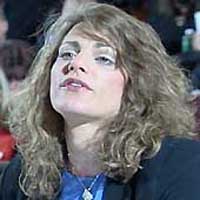 In March 2003, at the opening session of the 9/11 Commission, the “Jersey Girl” Mindy Kleinberg read to the 11 members a call for a transparent investigation; the text, as admitted by Jamie Gorelick, a member of the Commission, offered guidelines for the investigation: from the visas to the 15 Saudi hijackers, with defects of form and procedure, to the holes in the airports security; from strange pre-9/11 speculations on the stock exchange on the two airlines involved in the attacks, to the monumental research material ignored by various federal agencies before the attack, but used by authorities to close the case in just few weeks.
In March 2003, at the opening session of the 9/11 Commission, the “Jersey Girl” Mindy Kleinberg read to the 11 members a call for a transparent investigation; the text, as admitted by Jamie Gorelick, a member of the Commission, offered guidelines for the investigation: from the visas to the 15 Saudi hijackers, with defects of form and procedure, to the holes in the airports security; from strange pre-9/11 speculations on the stock exchange on the two airlines involved in the attacks, to the monumental research material ignored by various federal agencies before the attack, but used by authorities to close the case in just few weeks.
Not to mention the Norad: not only the military aviation did not defend the airspace of New York, but failed to protect even the Pentagon or the White House or Capitol Hill. At 8:43am the Faa (Federal Agency of Air Space) notified Norad of a second hijacked plane, Flight 175; at 8:46am flight A11 crashes into WTC 1; at 10am, still no fighter jet is flying over Washington DC skies to watch US Institutions and prevent other attacks.
Despite General Myers denied it, over the years the Joint Armed Forces had carried out periodic exercises on scenarios similar to 9/11, even with hijacked planes headed to New York skyscrapers or the Pentagon. And by the way, in those days Norad was engaged in a gigantic war simulation, and it was specular to the 9/11 attack. Before the Defense Committee of the Senate, Myers stated that “Vigilant Guardian”, the name of one of the operations, not in the least affected the response of Norad.”
And Myers had no relevant justification why on 9/11 got into video-conference with the FAA and the JOC (Joint Operations Command of the White House) only after the crash of A77 (the third hijacked plane) into the Pentagon, which occurred at 9:37am.
Myers was unavailable; Secretary of Defense Donald Rumsfeld basically ignored the attack on New York City, and when the Pentagon was hit, he fled his office, stepping out of the communication loop; so, Richard Clarke was the first to take charge of the emergency operations. At 9:10am, eight minutes after the crash of the second plane (Flight 175) into WTC2, Clarke had already given orders to scramble fighter jets to protect Washington DC. His instructions got lost along the chain of command.
And hang in suspension was the authorization to shoot down civilian aircrafts in case of emergency.
When the first plane speared into the WTC 1, George W. Bush was heading towards an elementary school in Sarasota, Florida; it was said that he had no reaction to the news – as if he hadn’t even read the PDB of August 6th about Al Qaeda plans to hit the US; as if he was unable to link that event to the threat of a terroristic attack over which Cia Director George Tenet had warned him face to face three weeks before.
When informed that a second plane had crashed into the WTC 2, and America was under attack, the President was in a classroom, among children, with the eyes of the press on him: he did not bat an eyelid.
While the jumpers cast one last look upon the spoiled Manhattan skyline, George W. Bush rested dazed for more than 5 minutes in that classroom, listening to the nursery rhyme “my little petty goat”. And when his eyes searched for someone who suggested him what to do, Ari Fleischer, his Press Secretary, took a slate and wrote upon it: “DO NOT SAY ANYTHING YET”.
From here onwards, from 9:02AM until 10:06AM, facts take the shape depending on who tells them. Suffice it to say that the memories of Dick Cheney, Richard Clarke, and who was in the White House, do not fit together. Above all, there are very conflicting versions over the Vice President whereabouts at 9:37AM: where was Dick Chaney when A77, officially, crashed into the Pentagon? At that time had he already given the green light to shoot down civilian planes?
George W. Bush, according to what it is given us to know, did not issue specific orders before 10:18, when he instructed Donald Rumsfled, brought back to his office, on how to proceed with the hijacked planes. So the President would have never given his Deputy permission to shoot down civilian flights; it is not even clear whether Bush and Cheney were able to talk on the phone, how many times, for how long. When Richard Clarke inquired about who had the authority to give the order to shoot down airliners – with Stinger missiles available to the White House – Cheney made him know that Bush, on the telephone, had just entrusted to him the responsibility for that command. (sources)
Norman Mineta, the Secretary of Transport, testified before the 9/11 Commission that at 9:25am he was in the Peoc (Presidential Center for Operations Command), where a line had been established with the Operational Command of the Faa; and according to Mineta in the PEOC there was also Dick Cheney.
Between 9:26 and 9:30am, according to the testimony of the Faa, even one radar operator of “Dulles” airport in Washington was in direct communication with the White House; the operator updated JOC and Clark on the movements of an unidentified aircraft heading for the Capital. It was the A77, hijacked at 8:54am, but lost by Faa since then. According to the version of Mineta, the agent Douglas Cochrane entered at least twice in the Peoc updating on the countdown of the radar operator, and reporting that the aircraft was approaching to Washington.
With the gap narrowing more and more, Cochrane asked: “does the order remain the same?”
Cheney replied, “the order does not change.”
Mineta assumed that the dialogue between Cheney and Cochrane was related to the eventuality to shoot down the approaching plane.
Meanwhile the radar operator of the Washington airport proceeded with the countdown: 10 miles, 9 miles, 8 miles, and so on. Suddenly, however, the Boeing, at a speed of 500 m/h, executed a veer of 300°. At Dulles Airport, radar operators were relieved, as they thought: “it must be a fighter jet arrived to protect Washington.”
When they realized that the plane, instead, was pointing towards the Pentagon, it was too late to ask for the authorization to shoot it down. In addition to the A77 passengers, 125 people died at the Pentagon.
Cheney, contrary to what Mineta and others stated, has always said that up before the A77 crash into the Pentagon, he was in his office; and in the instant of the impact, he was walking along a tunnel in the basement of the White House. Also according to his own version, Cheney arrived at the PEOC at 9:58am. For Cheney, the whole sequence narrated by Mineta on the A77, in fact, must be referred to the fourth hijacked plane, the UA93.
However, as the 9/11 Commission has confirmed, there was no need to shoot down any civilian aircraft approaching Washington: between 10:03 and 10:06 the UA93 crashed in a Pennsylvania field, and not onto Capitol Hill, as the terrorists had planned: the heroism of the passengers, who fought back against the hijackers, saved hundreds of American lawmakers.
More or less at the same time, in New York, other heroes lost their lives: entered the South tower to rescue as many people as possible, hundreds of firefighters and police officers were doomed to never see again the sunlight, the bay of the Hudson River, and the threshold of their home.
Cheney followed the destruction of the Twin Towers live on television. Upon an estimate number of thousands of victims, according to witnesses, he narrowed his eyes; when he reopened them, phoned George W. Bush, persuading him to stay away from Washington DC – after a few hours the US President decided to reach the White House because his father George H. W. Bush pressured him to do so.
Afterwards, Dick Cheney did call the presidential lawyers to develop the expansion of the powers of the White House, the Patriot Act, and the application of the AUMF over the planet.
None held accountable
Two and a half months earlier, on June 28, 2001, the Director of Central Intelligence George Tenet had called an emergency meeting with Condoleezza Rice, the White House National Security Advisor. At the presence of Counter-Terrorism Czar Richard Clarke, Tenet went berserk to convince Rice that a spectacular terrorist attack by Al Qaeda was imminent, and likely on US soil: his sources were 100% sure. Clarke advised to increase the national alert at all levels. Instead Rice came out of that meeting without having wavered of an inch from her position, and the one of the Bush administration: there was no real danger of terrorist attacks by Al Qaeda. After that meeting Clarke summoned all of the major domestic agencies warning them of the impending danger; but his recommendations went ignored in the following days, or not properly coordinated.
After that same meeting, Rice officially passed to President Bush at least 6 PDB drawn up by the intelligence services, which warned of an attack to the United States; including the infamous PDB of August 6th, with the sentences:
“Suspicious activity (by affiliates of Al Qaeda) in our country for the preparation of hijackings or other types of attacks on buildings”
“We are investigating on the information of a group affiliated with Al Qaeda in the United States that are planning bomb attacks”
But the version that Rice gave before the 9/11 Commission, when she was called to testify under oath, did not change:
“There was no indication of an impending attack: those reports offered historical and general information on the threats of Al Qaeda.”
This is one of the 935 false statements, according to the Center for Public Integrity, issued by Bush administration officials to the 9/11 Commission. Not counting what Bush and Cheney could have said: the President and the Vice President testified together, behind closed doors, without oath, without any kind of recording, and with the power to review the notes taken by members of the Commission.
Did those 935 false statements affect the results of the final Report? – report written by Philippe Zelikow, a longtime associate of Condoleezza Rice, and member of the transition team for the Bush Administration after the 2000 elections. In the report Zelikow states that the various Federal agencies hadn’t forecast the attack because of negligence and a lack of imagination.
In the end it was extremely unlikely that the Commission would have reached Mindy Kleinberg’s conclusions in her appeal: “It is said that the terrorists have been lucky; but when you’re in front of a repeated pattern of broken protocols, broken laws, broken communications, one cannot still call it luck.”
Long before the results of the investigation, in 2004, were made public, Senator Max Cleland had already resigned from the 9/11 Commission, declaring himself outraged, disgusted, and accusing the Bush administration of cover-up.
Condoleezza Rice was promoted to Secretary of State, confirming the Bush administration’s policy involving anyone who had liability for the events of 9/11: from Richard Myers, promoted at the top of the Joint Chiefs of Staff, down to the last clerk. Shayna Steinger was the officer at the US consulate in Jeddah, Saudi Arabia, who issued visas to 12 of the future hijackers; in 2009, Steinger became a policy analyst at the American Embassy in the United Arab Emirates.
During the hearings of the investigation, apart from Richard Clarke, nobody apologized to the American people.
Justice for the victims of September 11
In 2003, Ellen Mariani, who lost her husband Louis on 9/11, filed a lawsuit against the Bush-Cheney administration: someone in the government and intelligence services knew in advance of the attacks, but did not do anything intentionally to avoid them. After thirteen years, the cause of Mrs. Mariani was rejected in all grades of the American justice system, including the Supreme Court.
And in 2009 the Supreme Court asked President Barack Obama if could be waived the special immunity granted to the Saudis connected with the 9/11 hijackers – a special immunity granted by the Bush Administration in 2002. A group of relatives of the 9/11 victims was still pursuing to bring to justice elements of the Saudi government. In support of those who filed the lawsuit, there is the testimony of Bob Graham, co-chairman of Joint Inquiry into the Intelligence before and after 9/11 – that same Inquiry pushed by the Senate Leader Tom Daschle and hampered by Cheney by all means.
For years, Graham has been trying to raise public awareness for the declassification of an entire chapter of the final report of the investigation: 28 pages, which describe in detail how elements of the Saudi government have supported financially and logistically the 9/11 hijackers. In a 2007 interview with Al Arabiya, Prince Bandar, Saudi ambassador in Washington on 9/11, admitted: “our intelligence agencies strictly followed the movements of the terrorists; if the United States had listened to us seriously, 9/11 would never have happened”.
The lawyer of the White House Elena Kagan formally requested the Court to ignore the lawsuit against Saudi Arabia. Later, before the panel in charge to evaluate her nominee as member of US Supreme Court, she said: “there was no special reason to waive the immunity to the Saudis in connection with the events of 9/11; I simply pursued the interest of my client, the US Government”.
In 2010, Kagan, the daughter of Robert Kagan, one of the ideologues who drew up the “Project for a New American Century”, has been appointed Judge of the Supreme Court of the United States.
In a courtroom the 28 classified pages would already be material of evidence: if they were made public, and disappeared the special immunity to the Saudis, Prince Bandar would have many thing to explain to the American people; including the reason why on 9/13/2001 he was welcomed to the White House, asking and getting permission from Bush in person to move out of America dozens of Saudi diplomats and their families. Were among them elements of the Intelligence services who “followed with precision” the future hijackers?
And perhaps Bush himself, and Cheney, would be called to give explanations to their fellow citizens: the former President might want to justify his and his father’s ties with the Bin Ladens and the Saudi royal family; the former Vice President might be willing to clarify his conflict of interest with the Halliburton, the oil company he chaired before joining the Bush administration. Halliburton in the Iraq post-Saddam has raised billions of dollars.
There is no reason to think that this will happen. In a 2009 interview, Richard Clarke explained in details how the secret services at the highest levels and the White House have managed on discretionary basis the information about the impending attack. The intelligence failure, according to Clarke, was caused by a specific policy, not a lack of investigative capacity. Clarke said: “They have been able to get through a Joint House Investigation Committee and the 9/11 Commission: […] they got away with it.”
Question: does Clarke exaggerate? Is he trying to cover his liability? In June 2001, he had asked to leave his role as counter-terrorism Czar, since nobody cared of the threat of an impending attack by Al Qaeda. The Bush-Cheney administration did not believe him; on the contrary, they basically demoted him.
In the same period, in June 2001, Paul Wolfowitz, gave a speech at the Military Academy at West Point: the subject was “on the surprise attack”. The Deputy Secretary of Defense, taking Pearl Harbor as an example, explained:
“In times of peace happens that signs of an imminent danger are ignored, or misunderstood; this is mainly due to a lack of imagination; or because those who are at the highest levels consider some information so important, that they keep it in secret, they do not share it with those on the field. The imminence of the attack to Pearl Harbor was clear to many, but none really believed it, because there was a lack of imagination; and those who possessed the code to decipher the Japanese communications, did not share it with those who could have stopped the attack. Today we live in a world of high expectations, and the risk is just that: the inability to predict the unthinkable.”
Also in the 2000 Paper Rebuilding America’s Defense, published by the “Project for a New American Century” and based on the Wolfowitz Doctrine, it is mentioned the surprise attack on Pearl Harbor, the event that prompted the United States to enter World War II:
“The process of transformation of the American military technology will be very long, in the absence of a catastrophic and catalyzing event – like a new Pearl Harbor.”
That passage at page 51, written by Dov Zakheim, budget advisor of the Scretary of Defense Rumsfeld, and the speech of Wolfowitz, are indicative: even though both of them did not lack of imagination, they did not believe in the imminence of a surprise attack, a catastrophic and catalyzing event, despite signals were blatant; they belonged to those at the highest level, who kept for themselves key information that would have allowed to stop the terrorist attacks.
The 9/11 Commission basically pardoned the negligence of those involved in the events of 9/11. But as stated by Coleen Rowley, the Fbi agent who contributed to the Minnesota Memo, “in a courtroom those very behaviors could be judged criminal malfeasance“.
Time passes by, and the possibility that the culprits of those malfeasances will ever pay for their faults, thins even more.
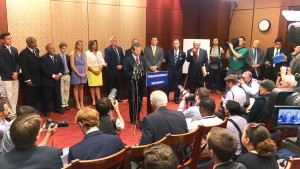
Congress members who sponsor a Resolution to release the 28 pages, Bob Graham (in red tie), and relatives of 9/11 victims at Press Conference in June 2015
And the chance to see in a US Courtroom those Saudis who helped the 9/11 hijackers is narrowing, even though there is a growing movement of people who ask for the release of the 28 pages, in which the role of the Saudi Intelligence in the attacks comes to light.
The battle of Bob Graham and relatives of the 9/11 victims continues; and goes on even the struggle of the survivors and first responders to obtain financial support to heal from cancer and severe respiratory illnesses. To the 2975 victims of that fatal day, in fact, must be added hundreds of suspicious deaths probably caused by the 400 tons of asbestos, plus 82 poisonous or carcinogenic agents, present in the three towers crushed down in few seconds: WTC1, WTC 2 and WTC 7.
And the relatives have struggled even to get a piece of body to bury and pay homage to with a funeral. Only 1,637 victims (60%) were identified: of the others, it was said, not even an inch remained, in order to perform a Dna analysis.
In 2011, the Council of New York City rediscovered 65 trucks plenty of WTC rubble. Two years later, the “Jersey Girl” Lorie Van Auken, after all this time, found the strength to speak out regarding those abandoned trucks: “We are desperate. This town speeded so fast to rebuild, but neglected to handle with respect the remains of those who were killed that day. New York and America have forgotten us.”
Eventually the rubble in the trucks received further examination. Through the analysis on the newly found remains, a handful of victims have been identified; all the human material on which it was not possible to do effective Dna analysis was transported in plastic bags in the basement of the 9/11 Memorial. Some of the relatives of those who died on September 11th went to Ground Zero to protest against what they consider the ultimate lack of sensitivity towards their loved ones.
For this reason, in New York, last year, I struggled to tune my spirit with the memory of that event: I feel inside of me that justice for the dead is missing; and I feel great empathy for those who fight in the name of their husbands, wives, daughters, sons, sisters, brothers; they fight in the name of a feeling, love, which is stronger than anything else.
If I were a parishioner of St. Paul, I’d ask to clean up the organ reeds; inside, however improbable, there might be inches of one of the victimes. The musical instrument, then, would resonate again like before. And maybe, one day, we will be able to listen to lyrics closer to the truth.
by Cristiano Arienti
This article was originally published in Italian on August 9th 2014, and it has been updated on August 10th 2015
Cover: San Paul Cathedral, Manhattan, on 9/11
Sources and useful Link
http://www.historycommons.org/project.jsp?project=911_project
https://www.youtube.com/user/Gold9472/videos
https://www.youtube.com/user/TheDavidgold/videos
http://28pages.org/


